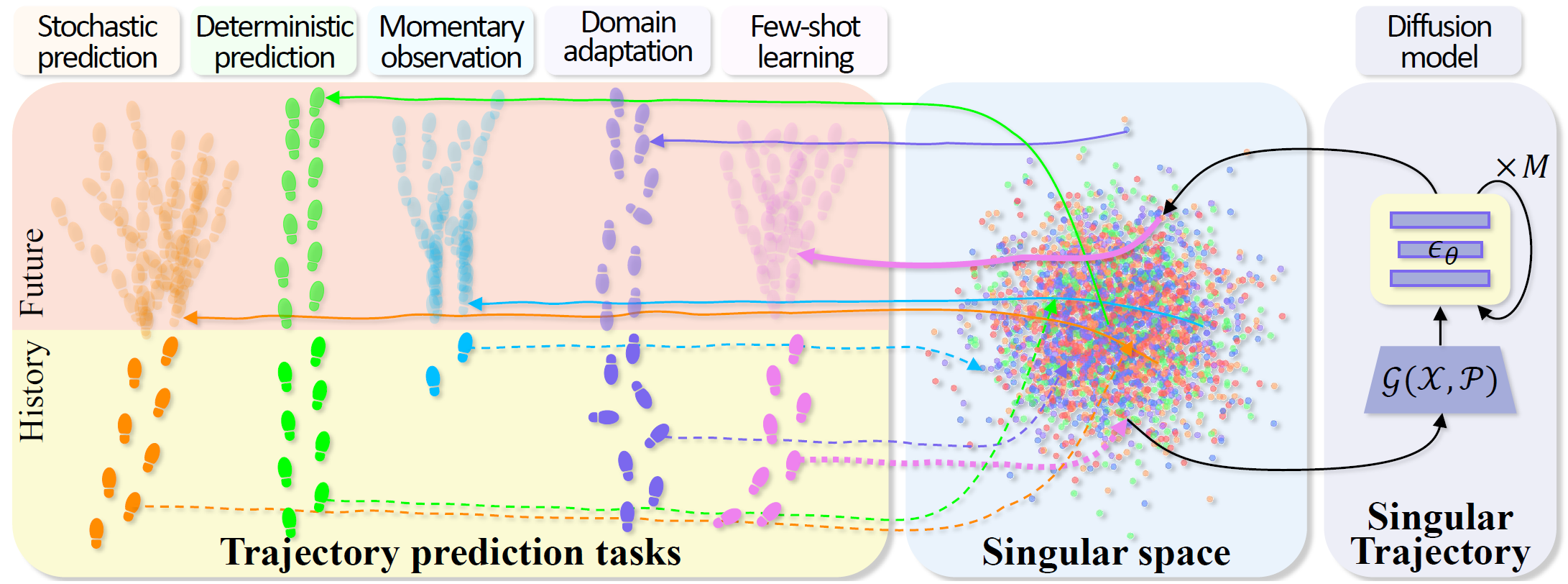SingularTrajectory: Universal Trajectory Predictor Using Diffusion Model
There are five types of trajectory prediction tasks: deterministic, stochastic, domain adaptation, momentary observation, and few-shot. These associated tasks are defined by various factors, such as the length of input paths, data split and pre-processing methods. Interestingly, even though they commonly take sequential coordinates of observations as input and infer future paths in the same coordinates as output, designing specialized architectures for each task is still necessary. For the other task, generality issues can lead to sub-optimal performances. In this paper, we propose SingularTrajectory, a diffusion-based universal trajectory prediction framework to reduce the performance gap across the five tasks. The core of SingularTrajectory is to unify a variety of human dynamics representations on the associated tasks. To do this, we first build a Singular space to project all types of motion patterns from each task into one embedding space. We next propose an adaptive anchor working in the Singular space. Unlike traditional fixed anchor methods that sometimes yield unacceptable paths, our adaptive anchor enables correct anchors, which are put into a wrong location, based on a traversability map. Finally, we adopt a diffusion-based predictor to further enhance the prototype paths using a cascaded denoising process. Our unified framework ensures the generality across various benchmark settings such as input modality, and trajectory lengths. Extensive experiments on five public benchmarks demonstrate that SingularTrajectory substantially outperforms existing models, highlighting its effectiveness in estimating general dynamics of human movements. Code is publicly available at https://github.com/inhwanbae/SingularTrajectory .
PDF Abstract



 UCY
UCY